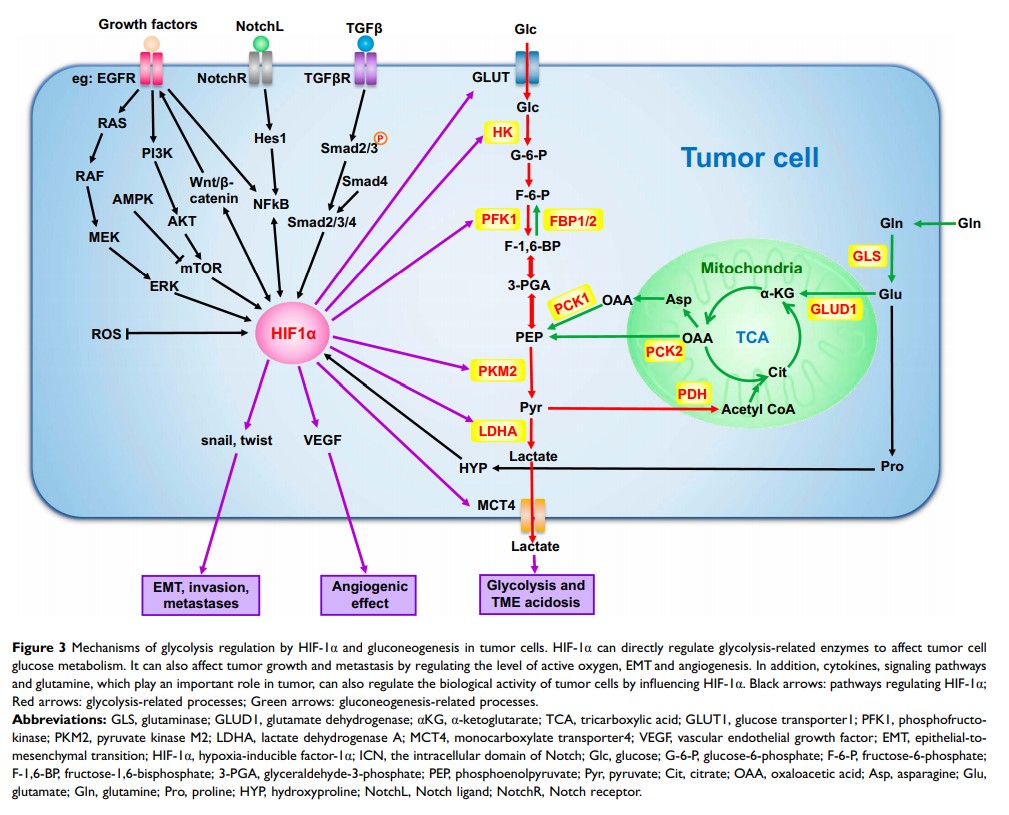9 0 8 1 0
论文已发表
注册即可获取德孚的最新动态
IF 收录期刊
- 2.6 Breast Cancer (Dove Med Press)
- 3.9 Clin Epidemiol
- 3.3 Cancer Manag Res
- 3.9 Infect Drug Resist
- 3.6 Clin Interv Aging
- 4.8 Drug Des Dev Ther
- 2.8 Int J Chronic Obstr
- 8.0 Int J Nanomed
- 2.3 Int J Women's Health
- 3.2 Neuropsych Dis Treat
- 4.0 OncoTargets Ther
- 2.2 Patient Prefer Adher
- 2.8 Ther Clin Risk Manag
- 2.7 J Pain Res
- 3.3 Diabet Metab Synd Ob
- 4.3 Psychol Res Behav Ma
- 3.4 Nat Sci Sleep
- 1.9 Pharmgenomics Pers Med
- 3.5 Risk Manag Healthc Policy
- 4.5 J Inflamm Res
- 2.3 Int J Gen Med
- 4.1 J Hepatocell Carcinoma
- 3.2 J Asthma Allergy
- 2.3 Clin Cosmet Investig Dermatol
- 3.3 J Multidiscip Healthc

肝细胞癌微环境中的糖代谢重编程:因果关系
Authors Tian H, Zhu X, Lv Y, Jiao Y, Wang G
Received 14 April 2020
Accepted for publication 30 June 2020
Published 17 July 2020 Volume 2020:12 Pages 5957—5974
DOI https://doi.org/10.2147/CMAR.S258196
Checked for plagiarism Yes
Review by Single-blind
Peer reviewer comments 3
Editor who approved publication: Dr Seema Singh
Abstract: Hepatocellular carcinoma (HCC) is a tumor that exhibits glucometabolic reprogramming, with a high incidence and poor prognosis. Usually, HCC is not discovered until an advanced stage. Sorafenib is almost the only drug that is effective at treating advanced HCC, and promising metabolism-related therapeutic targets of HCC are urgently needed. The “Warburg effect” illustrates that tumor cells tend to choose aerobic glycolysis over oxidative phosphorylation (OXPHOS), which is closely related to the features of the tumor microenvironment (TME). The HCC microenvironment consists of hypoxia, acidosis and immune suppression, and contributes to tumor glycolysis. In turn, the glycolysis of the tumor aggravates hypoxia, acidosis and immune suppression, and leads to tumor proliferation, angiogenesis, epithelial–mesenchymal transition (EMT), invasion and metastasis. In 2017, a mechanism underlying the effects of gluconeogenesis on inhibiting glycolysis and blockading HCC progression was proposed. Treating HCC by increasing gluconeogenesis has attracted increasing attention from scientists, but few articles have summarized it. In this review, we discuss the mechanisms associated with the TME, glycolysis and gluconeogenesis and the current treatments for HCC. We believe that a treatment combination of sorafenib with TME improvement and/or anti-Warburg therapies will set the trend of advanced HCC therapy in the future.
Keywords: hepatocellular carcinoma, tumor microenvironment, glycolysis, gluconeogenesis, Warburg effect
